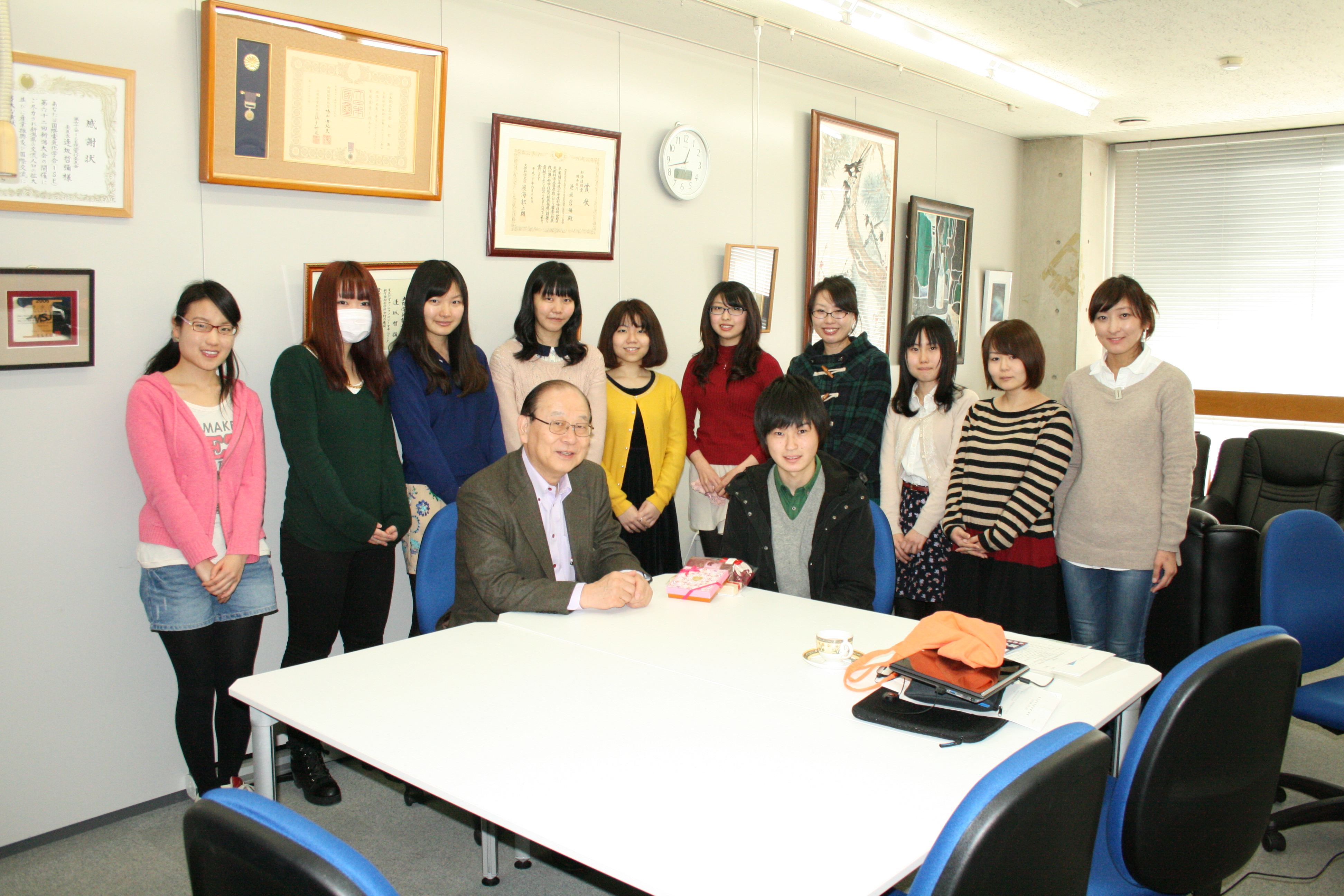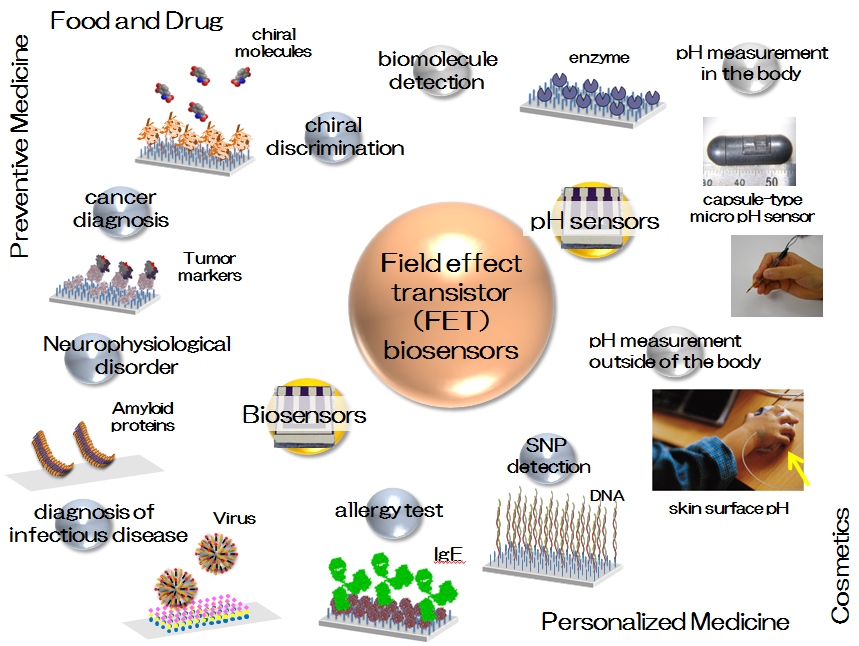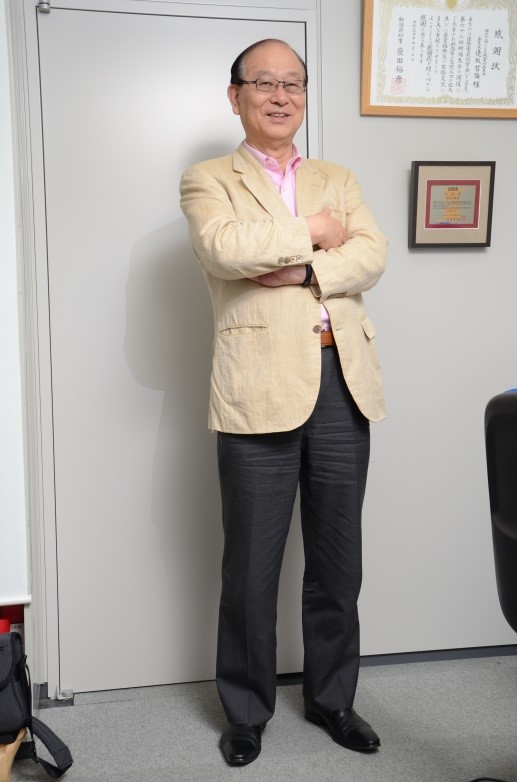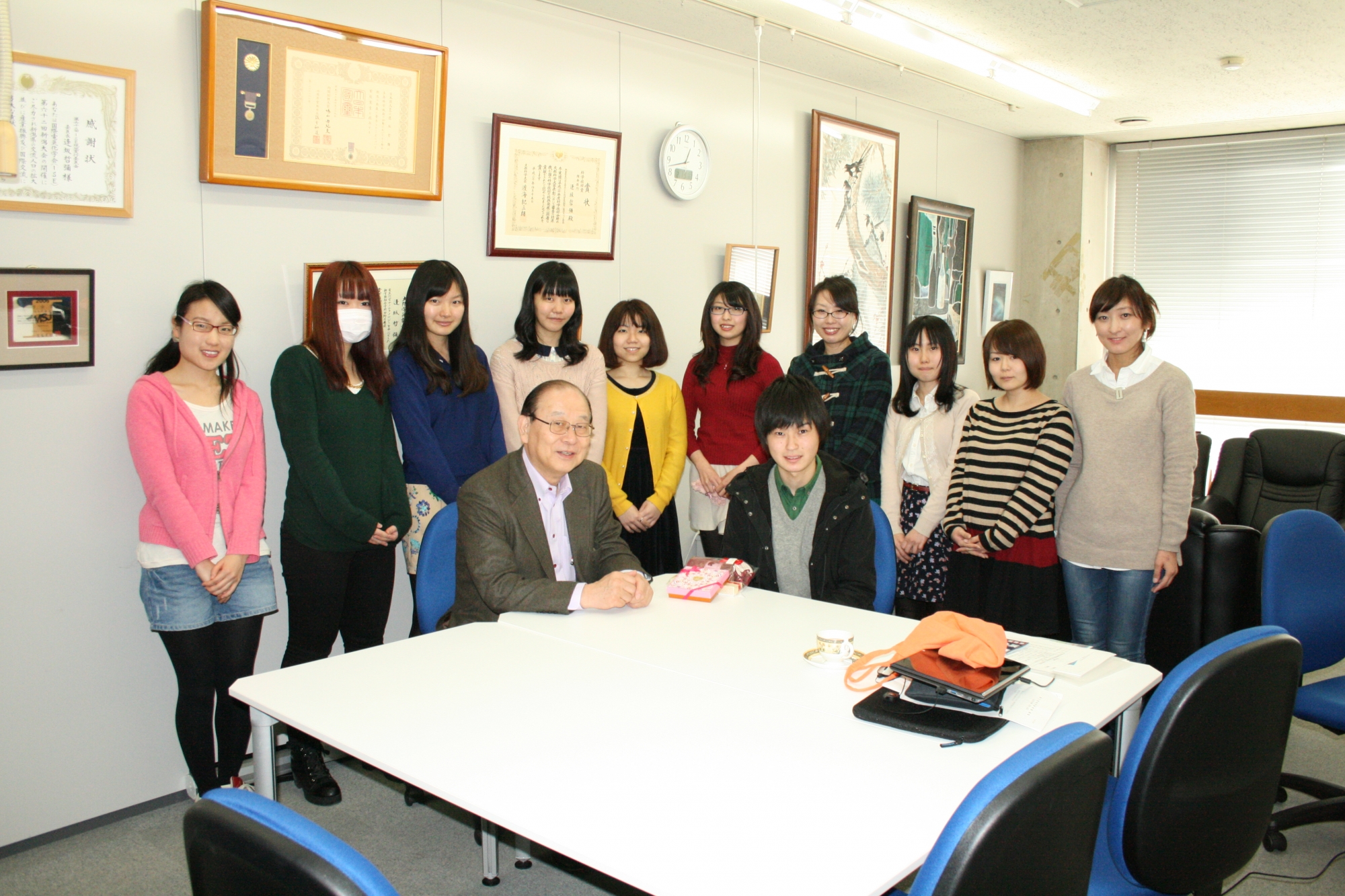Waseda Frontline Research Vol. 6, Part 3 – High performance thin film materials leading the future
Fri, Dec 25, 2015-
Tags
High performance thin film researcher Professor Tetsuya Osaka
Faculty of Science and Engineering
Medical innovations of the semiconductor biosensor

Professor Osaka’s office
Professor Tetsuya Osaka’s specializes in the “Development of Advanced Thin Film Materials.” Other than the development of storage batteries, Professor Osaka and his research group also focus on the development of medical analysis technology using semiconductors. Common disorders such as cancer, diabetes, and Alzheimer’s disease must be treated early on in order to be cured. The biological semiconductor sensor developed by Professor Osaka and his group can detect the substances that cause such diseases. We asked Professor Osaka about biological semiconductor sensors and their potential to contribute greatly to the prevention and treatment of diseases.
Using semiconductors to measure viruses and chemicals inside the body
We hope to utilize a semiconductor called FET (field effect transistor), which is currently in development, in the medical field.
Semiconductors used in computers process digital signals by using voltage magnitude to turn current on or off. In contrast, FET identifies viruses or chemicals by using changes in voltage when a virus or chemical sticks to the “gate” of the semiconductor.
By applying this semiconductor to sensors, our research intends to check health conditions with easy to obtain bodily secretions such as nasal mucus, saliva, blood, urine, and sweat. This technology uses semiconductors to measure the amount of viruses and chemicals inside a living body. It is receiving great attention from international medical equipment manufacturers and Japanese food manufacturers and we have had several discussions regarding potential joint research.
Our research group’s biosensor can detect target substances with only a single drop of blood or nasal mucus. Presuming that one drop of nasal mucus contains 15 cells of the influenza virus, we have achieved a sensitivity that can respond to and identify the presence of the virus within 10 minutes.
Using semiconductor biosensors to perform early diagnoses of Alzheimer’s disease and prevent tooth decay, cancer and allergies
We intend to use this technology to prevent Alzheimer’s disease, a common disorder in elderly patients with dementia. The cause of Alzheimer’s disease is still not clear, but we do know that a substance called Amyloid-β accumulates in the brain cells of Alzheimer’s patients, which we can verify by checking the brain.
We know that Amyloid-β slightly oozes into the bloodstream, which makes it possible to predict if a person will be diagnosed with Alzheimer’s disease in the future by checking the concentration of Amyloid-β in their blood. If the precision of the sensor improves, people will know if they will be diagnosed with Alzheimer’s disease 20 years in the future, and can take measures to prevent the disease (for example, taking medicine).
We have also successfully developed a biological pH sensor that measures the pH of liquids by detecting hydrogen ions with a micro-sensor. Measuring the pH of sweat on skin with this sensor makes it possible to estimate the possibility of atopic dermatitis diagnosis. We are working to apply this technology to diagnosing this condition in dogs. Tooth decay tends to occur if saliva is acidic. We are investigating the possibility of applying this technology to prevention and treatment in the dental field by attaching a fine sensor to the surface of teeth and monitoring the daily acidity of saliva.
We believe that using the biosensor to measure blood-sugar levels and proteins makes it possible to estimate the possibility of being diagnosed with diabetes, cancer, allergies, and other diseases in a short timeframe. We are considering future applications where people can buy commercially available sensor kits and check their health. If they are concerned about cancer or other diseases, they can go to the doctor and receive a professional medical examination to prevent and treat the disease. We are considering applications where a doctor can check the condition of a patient’s brain cells in the middle of brain surgery, or check the hormone balance of a patient suffering from depression.

The key to practical application of technology is mass production; Collaborating between Engineering, Medical Science, and Chemistry to develop new technology
We worked with a major medical equipment manufacturer to develop a pH sensor that is almost ready for practical use. They have not officially released the sensor to the market because they estimate the market share to be small.
There are some challenges in putting this technology to practical use. The first comes from the fact that the sensor must be able to operate in a wet environment. Unlike computers, which are dry, the human body is filled with liquid. Another challenge comes from the fact that the operation cannot be obstructed by alkali concentrations inside the human body or by ions contained in living organisms. We overcame these challenges by covering the semiconductor surface with a special membrane structure.
In order for this technology to be widely accepted, it is important to develop semiconductors that can be mass produced inexpensively and easily disposed of. We cannot use sensors for humans forever because of hygienic reasons and risks of infection. We must be able to produce the sensor at a low cost so that people can easily purchase it at drug stores and check their health for themselves.
We must collect and analyze a massive amount of data from millions of people in order to make the sensor useful for treatment. For this reason, it is essential to develop technology that can mass-produce the biosensor. We are looking for a way to mass-produce FET with printing technology. The cost of manufacturing one sensor is currently around 20 thousand yen but will be reduced to 50 yen if mass-production technology is available.
We are considering establishing a system where in the future, we can attach a semiconductor sensor combined with a wireless to a person’s skin and allow them to check their health at any time with their smartphone. In the United States, manufacturers such as Apple are developing a product called the smartwatch. I think they are also exploring the possibility of allowing people to continuously check their health while partnering with the medical and insurance industry. In the future, the semiconductor sensors will greatly affect the healthcare industry.
With Japan at the forefront, preventive medicine will be very important in developing countries with aging populations. This biological semiconductor sensor will make make massive contributions to the progress and spread of preventive medicine. This is a cutting-edge research field with exceptional medical-engineering collaborations between universities and research institutions. Researchers in engineering, chemistry, medical science, and a variety of other specializations come together at our laboratory. I hope that young and energetic people will join our research and improve the health of many.
Profile

Completed course Waseda University, Graduate School of Science and Engineering for a D. Eng. degree in Applied Chemistry (1974).
Postdoctoral researcher at Georgetown University in the United States (1976).
Professor at Waseda University (1986 until present).
Visiting Professor at University of Minnesota (1989).
Dean at Waseda University, Graduate School of Science and Engineering, and Trustee at Waseda University (1998).
Director of Research Promotion Division at Waseda University (2002).
Deputy President at Waseda University (Research Promotion) (2014).
Deputy Dean of Waseda University, Faculty of Science and Engineering (2014).
Chairperson of Waseda University Research Organization for Nano & Life Innovation (2015).
Research
Batteries & Fuel cells
- “New Si–O–C composite film anode materials for LIB by electrodeposition”, J. Mater. Chem. A, 2, 883 (2014)
- “Application of Electrochemical Impedance Spectroscopy to Ferri/Ferrocyanide Redox Couple and Lithium Ion Battery Systems Using a Square Wave as Signal Input”, Electrochim. Acta, 180, 922 (2015)
- “Development of Diagnostic Process for Commercially Available Batteries, Especially Lithium Ion Battery, by Electrochemical Impedance Spectroscopy”, J. Electrochem. Soc., 162, A2529 (2015)
- “Impedance analysis counting reaction distribution on degradation of cathode catalyst layer in PEFCs”, J. Electrochem. Soc., 158, B1184 (2011)
Biosensors & Biomaterials
- “Attomolar detection of influenza A virus hemagglutinin human H1 and avian H5 using glycan-blotted field effect transistor biosensor”, Anal. Chem., 85, 5641 (2013)
- “Sensitive electrical detection of human prion proteins using field effect transistor biosensor with dual-ligand binding amplification”, Biosens. Bioelectron., 67, 256 (2015)
- “Induction of Cell Death in Mesothelioma Cells by Magnetite Nanoparticles”, ACS Biomater. Sci. Eng., 1, 632 (2015)
Magnetic recording devices & Electronic devices
- “A Soft Magnetic CoNiFe Film with High Saturation Magnetic Flux Density and Low Coercivity”, Nature, 392, 796 (1998)
- “Injection of synthesized FePt nanoparticles in hole-patterns for bit patterned media”, J. Magn. Magn. Matter., 324, 303 (2012)
- “Effect of Carbon Inclusion on Microstructure of Electrodeposited Au-Ni Alloy Films”, J. Electrochem. Soc., 158, D403 (2011)












